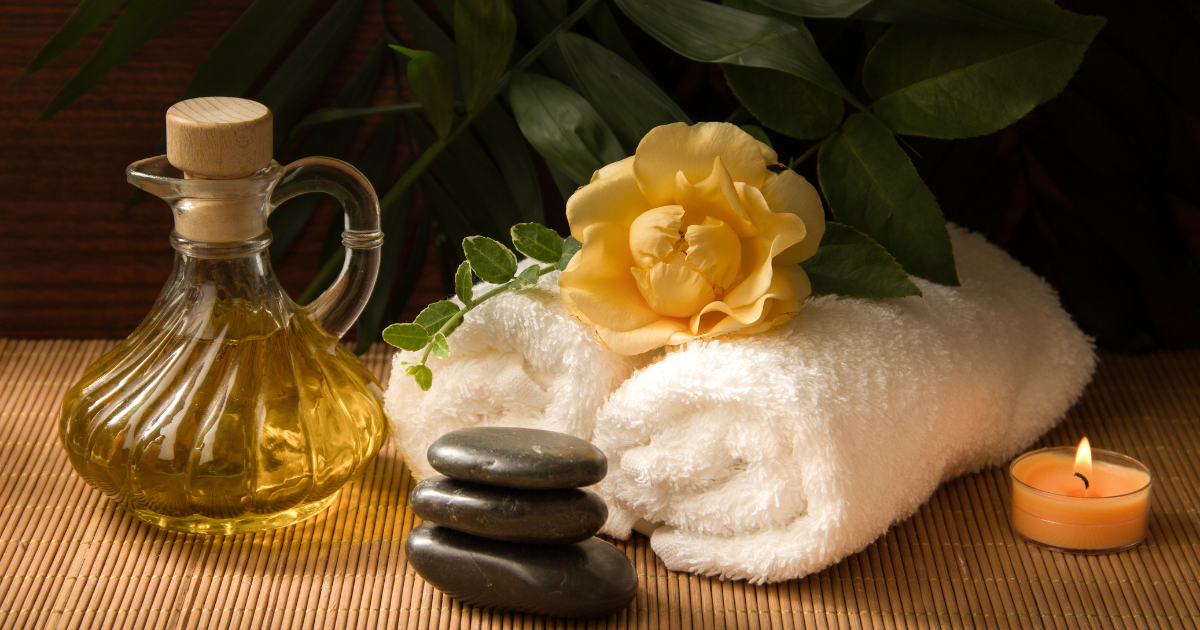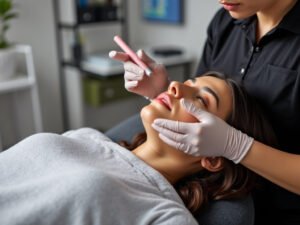“Looking for a lymphedema massage near me? Here’s what to expect during a session, procedures, session length, and aftercare tips to reduce swelling.”
You know how it is if you’ve had lymphedema.
The swelling, the heaviness—it’s not just in your head. It’s your body holding onto fluid that can’t flow like it should.
That’s where a lymphedema massage can help to release that built-up fluid and make you feel lighter.
But before you look for a lymphedema massage near me, you might be wondering what happens during a session.
How does it work? How long does it take? And what should you do afterward to get the best results?
I’ll break it all down for you so you know what to expect when you go in.
From the procedures to how to care for yourself afterward, this will have you feeling prepared and ready to book that first appointment.
What is a Lymphedema Massage?
Lymphedema massage, also known as manual lymphatic drainage, is a light technique to help with swelling caused by lymph fluid buildup.
You know how it is if you have lymphedema.
This type of massage targets the lymphatic system to make it work better to reduce swelling and move fluid out of the affected areas.
During a lymphedema massage, the therapist uses light pressure and rhythmic strokes to move lymph fluid toward the lymph nodes.
These nodes are filters that help the immune system remove toxins and bad stuff from the body.
The goal is to get your body’s circulation working and your lymphatic system moving fluid.
This type of massage is helpful if you’ve had an injury surgery or managing long-term conditions like arthritis or fibromyalgia.
There are many benefits of lymphatic massage, including reducing swelling, improving circulation, and supporting the body’s natural detox.
A certified massage therapist will know how to do this technique for your lymphedema.
The result? You’ll feel less discomfort and lighter after each session of this lymphedema massage.
What to Expect During a Lymphedema Massage Session
If you’ve never had a lymphatic drainage massage before, it might help to know what happens during a session.
Here’s what to expect when you book a lymphedema massage near me.
Step 1: Consultation
First, the therapist will talk to you about your health history.
They’ll ask about conditions like fibromyalgia or arthritis or if you’ve had a recent injury or surgery. This helps them determine the best approach for your session.
They’ll look at the areas where you have swelling and decide how to help you.
Step 2: Positioning
Then you’ll get on the table. If one of your limbs has swelling, they might elevate it to help with drainage.
This simple positioning trick helps the lymphatic system do its job by moving lymphatic fluid.
Step 3: Deep Breathing
Before the massage starts, the therapist might guide you through some deep breathing. This gets your lymphatic system going.
Deep breathing is like a pump for the lymph vessels; it gets the flow moving before the therapist starts working on the affected areas.
Step 4: Gentle Strokes
Once the massage starts, you’ll notice that the therapist is using very light pressure and gentle rhythmic strokes.
This isn’t a deep tissue massage; this is to move the lymphatic fluid slowly towards the lymph nodes.
By doing this, the body can start to drain the excess fluid, causing discomfort.
These strokes follow the lymphatic pathways to help your body process and remove the built-up fluid.
Step 5: Focus on Key Areas
The therapist will focus on the areas where you have the most fluid buildup. These areas are usually your arms, legs, or abdomen, but everyone is different.
Depending on where you have swelling, the therapist may spend more time on those areas to get the lymph flowing in the right direction.
Step 6: Compression or wrapping
After the lymph drainage massage, the therapist may recommend compression garments or even wrapping them with compression bandages.
This helps to maintain the benefits of the massage and prevent fluid from building up again.
Overall, the goal is to reduce swelling, improve circulation, and relieve the heaviness and discomfort of lymphedema.
Each session can also detox your body as your lymph system removes waste and bad stuff.
When looking for a lymphedema massage near me, make sure the therapist is certified in manual lymph drainage and has experience with lymphedema patients. Such soothing tones of this therapeutic technique can be very relieving.
How long is a Lymphedema Massage Session?
When you book a lymphatic drainage massage, the session length will depend on your needs and the severity of your lymphedema. Most sessions are 30-90 minutes but can go longer if needed.
If your swelling is mild, a shorter session may be enough to move the lymph fluid and improve circulation. However, for more severe cases, especially after a recent injury or surgery, a longer session may be needed.
For best results, regular sessions are often recommended, especially for long-term conditions like chronic lymphedema. If you’ve had something like liposuction, you may need more frequent visits to manage swelling and help the body recover.
Your massage therapist will advise on how many sessions you’ll need.
A good therapist will also tailor each session to your individual needs so the lymphatic massage is effective for your body.
Regular visits will make a big difference in how you feel, especially if you’re looking for long-term relief from lymphedema symptoms.
Aftercare Tips for Lymphedema Massage
Once your lymphedema massage near me is done, you’ll need to follow a few simple aftercare steps. These will help you maintain the benefits and prevent swelling from coming back too soon.
a). Drink Water
After the massage, drinking plenty of water is key; hydrating your body helps move the lymphatic fluid better, flush out toxins, and keep your lymphatic system working.
Drink several glasses of water throughout the day after your massage.
b). Wear Compression Garments
Wearing compression garments is also important to maintain the massage results. Compression keeps the lymph fluid moving and prevents it from building up again.
Your therapist may even recommend special compression bandages or wraps to wear after each session, especially if you have more severe lymphedema.
c). Rest and Recovery
Give your body some time to rest after the massage. This is especially important if you’re treating chronic lymphedema or other conditions like skin disorders or edema.
Let your body heal for a bit to avoid stressing the lymphatic system.
d). Avoid Heavy Activities
Take it easy after the session. Avoid heavy physical activity that will interfere with lymphatic drainage.
Letting your body rest gives the lymph system time to recover and keep swelling down.
e). Cold Compress for Discomfort
If you feel any discomfort after the massage, applying a cold compress will help. Cold packs reduce swelling and ease any soreness that may come up after the treatment.
f). Follow Your Therapist’s Advice
Lastly, follow your massage therapist’s aftercare instructions.
They may recommend additional treatments like more frequent manual lymph drainage or specific exercises for your lymph system, depending on your situation.
A good therapist will tailor their advice to your condition so you get the best out of the massage.
Follow these aftercare steps, and you’ll maintain the benefits of your lymphatic drainage massage and feel better for longer.
How to Find the Right Lymphedema Massage Near You
Finding a lymphedema massage near me makes all the difference in your treatment.
You’ll want to find a certified massage therapist who does manual lymph drainage or lymphedema treatment.
Not all massage therapists are trained to work with lymphatic issues, so you need to choose someone who knows how to work with the lymphatic system.
Look for therapists who have experience with conditions like cellulite, fibromyalgia, or skin disorders – these require special care, and a therapist with the right training will make sure you get the treatment that will work for you.
Many spas or massage therapy services offer lymphatic massage, but always check their qualifications.
You can find therapists by searching online, reading reviews, and asking for recommendations. Pay attention to how other clients feel about their experience.
A therapist who knows how the lymph system works will make sure the treatment is safe and effective and will also prevent any unnecessary complications or discomfort.
Once you have found a good therapist, you’ll feel at ease.
Conclusion
A lymphedema massage can be a life changer if you have swelling or discomfort caused by lymphatic issues.
Knowing what to expect during the session, how long it will take, and the right aftercare steps can greatly change how you feel afterward.
Remember to stay hydrated, rest, and follow any advice your massage therapist gives you.
Finding the right therapist with experience in manual lymph drainage can give you peace of mind, knowing your body is in capable hands.







+ There are no comments
Add yours